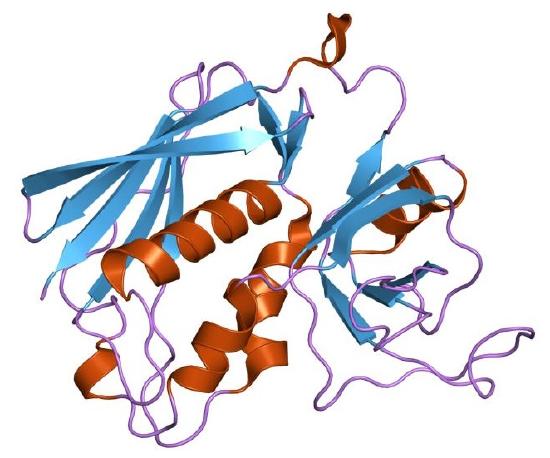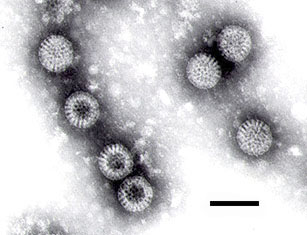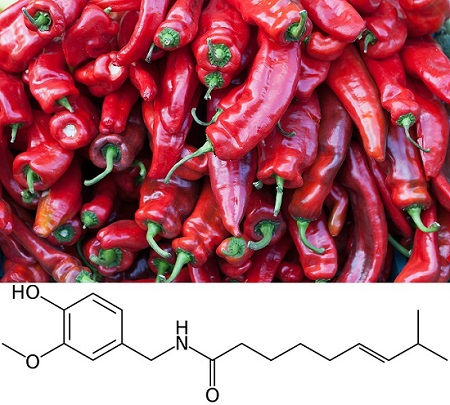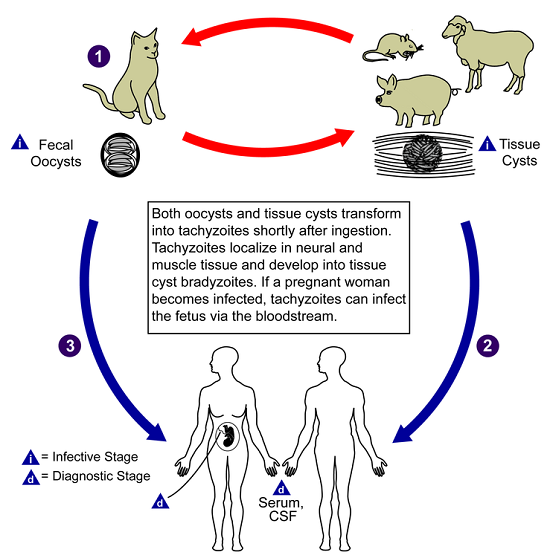Bacteria and viruses are the most common cause of food poisoning, although toxins and parasites also can contribute. The symptoms and severity of food poisoning vary, depending on which bacteria or virus has contaminated the food.
Bacteria
Bacteria are a common cause of foodborne illness. In the United Kingdom during 2000, the individual bacteria involved were the following: Campylobacter jejuni 77.3%, Salmonella 20.9%, Escherichia coli O157:H7 1.4%, and all others less than 0.56%. In the past, bacterial infections were thought to be more prevalent because few places had the capability to test for norovirus and no active surveillance was being done for this particular agent. Toxins from bacterial infections are delayed because the bacteria need time to multiply (Figure 11.2.111.2.1). As a result, symptoms associated with intoxication are usually not seen until 12–72 hours or more after eating contaminated food. However, in some cases, such as Staphylococcal food poisoning, the onset of illness can be as soon as 30 minutes after ingesting contaminated food.

Figure 11.2.1: False color time-lapse video of E. coli colony growing on microscope slide. Image used wtih permission (CC BY-SA 4.0 Stewart EJ, Madden R, Paul G, Taddei F (2005) – Aging and Death in an Organism That Reproduces by Morphologically Symmetric Division. PLoS Biol 3(2): e45. https://doi.org/10.1371/journal.pbio.0030045.).
Enterotoxins
An enterotoxin is a protein exotoxin released by a microorganism that targets the intestines. Enterotoxins are chromosomally encoded or plasmid encoded[2] exotoxins that are produced and secreted from several bacterial organisms. They are often heat-stable, and are of low molecular weight and water-soluble. Enterotoxins are frequently cytotoxic and kill cells by altering the apical membrane permeability of the mucosal (epithelial) cells of the intestinal wall. They are mostly pore-forming toxins (mostly chloride pores), secreted by bacteria, that assemble to form pores in cell membranes. This causes the cells to die.

Figure 11.2.2: Cartoon representation of the molecular structure of staphylococcal enterotoxin registered with 1uns code. Image used with permission (Public Domain; Jawahar Swaminathan and MSD staff at the European Bioinformatics Institute).
In addition to disease caused by direct bacterial infection, some foodborne illnesses are caused by enterotoxins (exotoxins targeting the intestines). Enterotoxins can produce illness even when the microbes that produced them have been killed. Symptom appearance varies with the toxin but may be rapid in onset, as in the case of enterotoxins of Staphylococcus aureus in which symptoms appear in one to six hours. This causes intense vomiting including or not including diarrhea (resulting in staphylococcal enteritis), and staphylococcal enterotoxins (most commonly staphylococcal enterotoxin A but also including staphylococcal enterotoxin B) are the most commonly reported enterotoxins although cases of poisoning are likely underestimated. It occurs mainly in cooked and processed foods due to competition with other biota in raw foods, and humans are the main cause of contamination as a substantial percentage of humans are persistent carriers of S. aureus. The CDC has estimated about 240,000 cases per year in the United States.
Viruses
Viral infections make up perhaps one third of cases of food poisoning in developed countries. In the US, more than 50% of cases are viral and noroviruses are the most common foodborne illness, causing 57% of outbreaks in 2004. Foodborne viral infection are usually of intermediate (1–3 days) incubation period, causing illnesses which are self-limited in otherwise healthy individuals; they are similar to the bacterial forms described above.

Figure 11.2.3: Rotavirus. Note the wheel-like appearance of some of the rotavirus particles. The observance of such particles gave the virus its name (‘rota’ being the Latin word meaning wheel). Bar = 100 nanometers.IMpage used with permission (Public Domain; F.P. Williams, U.S. EPA).
Natural Toxins
Several foods can naturally contain toxins, many of which are not produced by bacteria. Plants in particular may be toxic; animals which are naturally poisonous to eat are rare. In evolutionary terms, animals can escape being eaten by fleeing; plants can use only passive defenses such as poisons and distasteful substances, for example capsaicin in chili peppers (Figure 11.2.411.2.4) and pungent sulfur compounds in garlic and onions. Most animal poisons are not synthesized by the animal, but acquired by eating poisonous plants to which the animal is immune, or by bacterial action.

Figure 11.2.4: Capsaicin is an active component of chili peppers, which are plants belonging to the genus Capsicum. It is an irritant for mammals, including humans, and produces a sensation of burning in any tissue with which it comes into contact. Red Cubanelle chili peppers. Image used with permission (CC BY-SA 4.0; © Tomas Castelazo, www.tomascastelazo.com / Wikimedia Commons).
Parasites
Food poisoning caused by parasites is not as common as food poisoning caused by bacteria and viruses, but parasites spread through food are still very dangerous. Toxoplasma is the parasite seen most often in cases of food poisoning (Figure 11.2.511.2.5). It’s typically found in cat litter boxes. Parasites can live in your digestive tract undetected for years. However, people with weakened immune systems and pregnant women risk serious side effects if parasites take up residence in their intestines.

Figure 11.2.4: This is an illustration of the life cycle of Toxoplasma gondii, the causal agent of toxoplasmosis. This media comes from the Centers for Disease Control and Prevention’s Public Health Image Library (PHIL), with identification number #3421. Note: Not all PHIL images are public domain; be sure to check copyright status and credit authors and content providers. Image used with permission (Public Domain; CDC/Alexander J. da Silva, PhD/Melanie Moser).
Contributors
Candela Citations
- Microbes in Food. Authored by: Medical LibreTexts Contributors. Provided by: LibreTexts. Located at: https://med.libretexts.org/Courses/Sacramento_City_College/SCC%3A_Nutri_300_(Coppola)/Chapters/11%3A_Food_Safety_Concerns_and_Future_of_our_Food/11.2%3A_Microbes_in_Food. License: CC BY-NC-SA: Attribution-NonCommercial-ShareAlike
